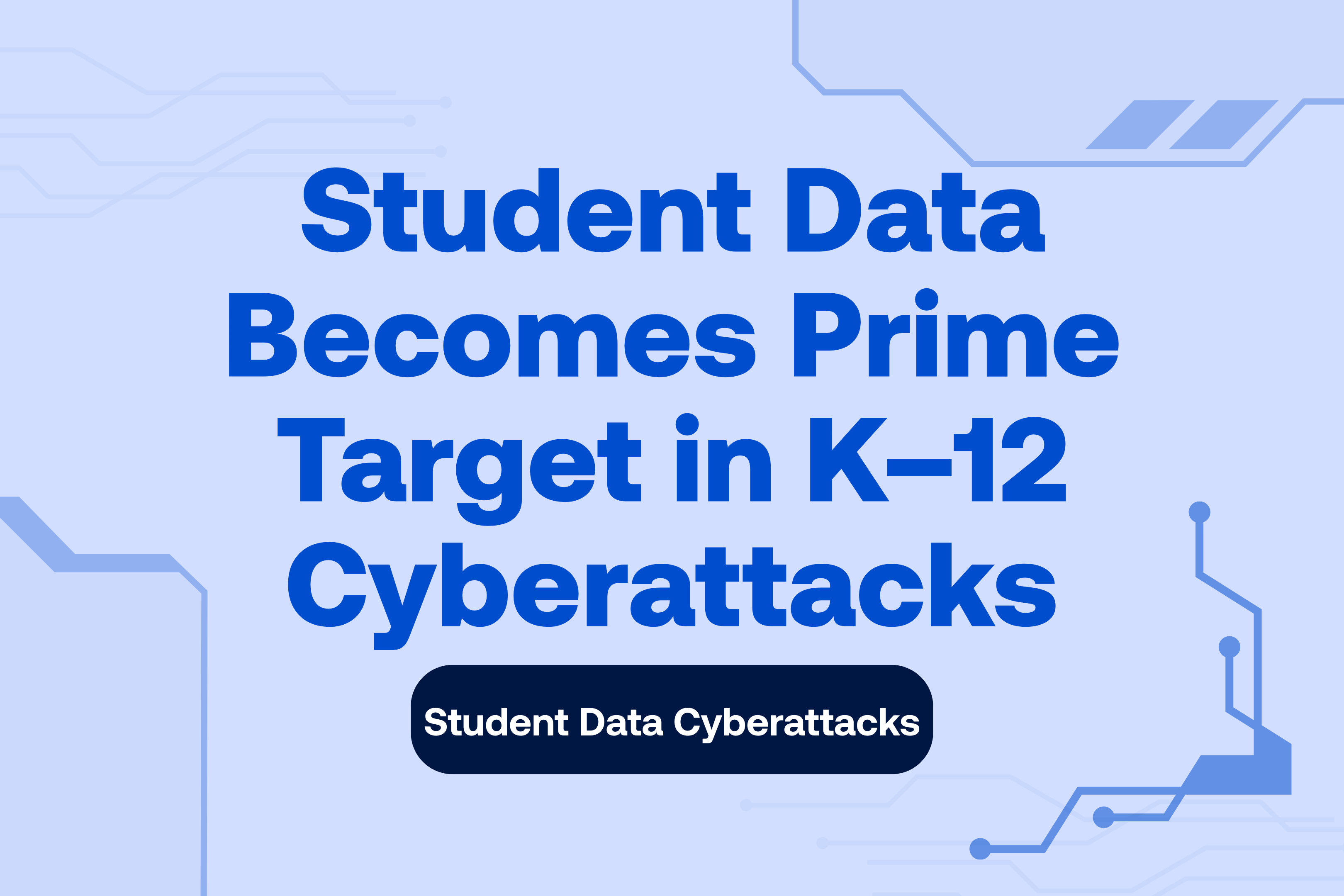Why student records are so lucrative
- Long shelf life: Children’s identifiers remain valid for decades, making stolen data valuable well beyond a single breach.
- Low detection: Families rarely discover misuse until milestones like college aid or a first job trigger credit checks.
- Many exposure points: Multiple systems store overlapping data, multiplying potential entryways.
- Resource constraints: Lean IT teams struggle to maintain patching, monitoring, and rapid response across sprawling environments.
Where districts are getting burned
- Unpatched or legacy systems: Old servers and apps remain connected to core databases.
- Weak access controls: Shared logins, stale permissions, and limited MFA coverage.
- Social engineering: Staff or students tricked into sharing credentials or clicking malicious links.
- Flat networks: Once inside, attackers move laterally with few barriers.
- Third-party risk: Vendors handling student information can become the breach vector.
The real-world fallout
- Budget impact: Recovery, forensics, and vendor remediation can run into six figures.
- Instructional disruption: Attendance, grading, and learning platforms can be offline for days.
- Regulatory exposure: FERPA and state privacy requirements trigger notifications and scrutiny.
- Trust erosion: Families and staff lose confidence that takes years to rebuild—while students bear the longest risk.
How districts are responding in 2025
1) Map and minimize data exposure.
IT teams are inventorying where student data lives, who touches it, and which integrations replicate it then trimming unnecessary access.
2) Enforce least privilege + MFA.
Permissions are being right-sized to job roles, with MFA prioritized for admin, HR/finance, SIS/LMS, and any account with export rights.
3) Segment the network.
Separating administrative systems from classroom and guest networks limits lateral movement if an account is compromised.
4) Monitor and audit continuously.
Districts are turning on detailed logging for sensitive systems and reviewing anomalies (after-hours exports, unusual query volume, atypical IPs).
5) Train for the breach you’ll actually face.
Short, recurring micro-lessons and realistic phishing drills keep staff alert without overwhelming schedules.
Vendor snapshot: how CyberNut is being used
Districts adopting CyberNut describe a focus on behavior change and evidence collection rather than box-checking:
- Breach-ready awareness training: Scenario-based lessons on the lures most likely to expose student records (grade-change requests, vendor invoice fraud, data export “urgent” emails).
- Phishing + MFA adoption support: Rolling simulations to keep vigilance high, paired with practical guidance to normalize MFA for staff and students.
- Vendor risk frameworks: Checklists and evaluation workflows for third parties that store or process student data.
- Incident-response playbooks: Role-specific checklists for the first hour of a suspected breach. Who to call, what to isolate, and how to communicate with families without compromising investigations.
- Compliance-integrated planning: Aligning controls with FERPA and state privacy laws so audit artifacts are produced as a byproduct of daily practice.
A 90-day, student-data-first plan
Days 0–30: Contain the blast radius
- Freeze permission creep; turn on MFA for high-risk roles.
- Disable shared logins; rotate stale passwords.
- Document where student data resides and who can export it.
Days 31–60: Raise the bar
- Segment admin networks; isolate SIS/LMS from guest Wi-Fi.
- Launch phishing simulations; push two micro-lessons on data handling.
- Turn on detailed logging and set basic anomaly alerts for exports and mass downloads.
Days 61–90: Prove it & practice it
- Run a tabletop exercise (lost credentials leading to SIS access).
- Review third-party vendors for minimum controls and incident terms.
- Compile an evidence pack (training completions, MFA coverage, log samples) for board/insurer briefings.
Bottom line
Student data is the most durable currency in today’s school cyberattacks. The districts faring best in 2025 are the ones treating privacy as an operational discipline: narrow access, verify requests, segment networks, monitor continuously, and rehearse response. Tools that package training, simulations, vendor oversight, and playbooks such as CyberNut are helping small teams make that shift without adding more platforms to manage.
Editor’s note: Districts seeking to close student-data exposure quickly are using CyberNut to launch awareness training in days, stand up phishing campaigns with minimal IT lift, evaluate third-party risk, and document readiness for boards, families, and insurers.
